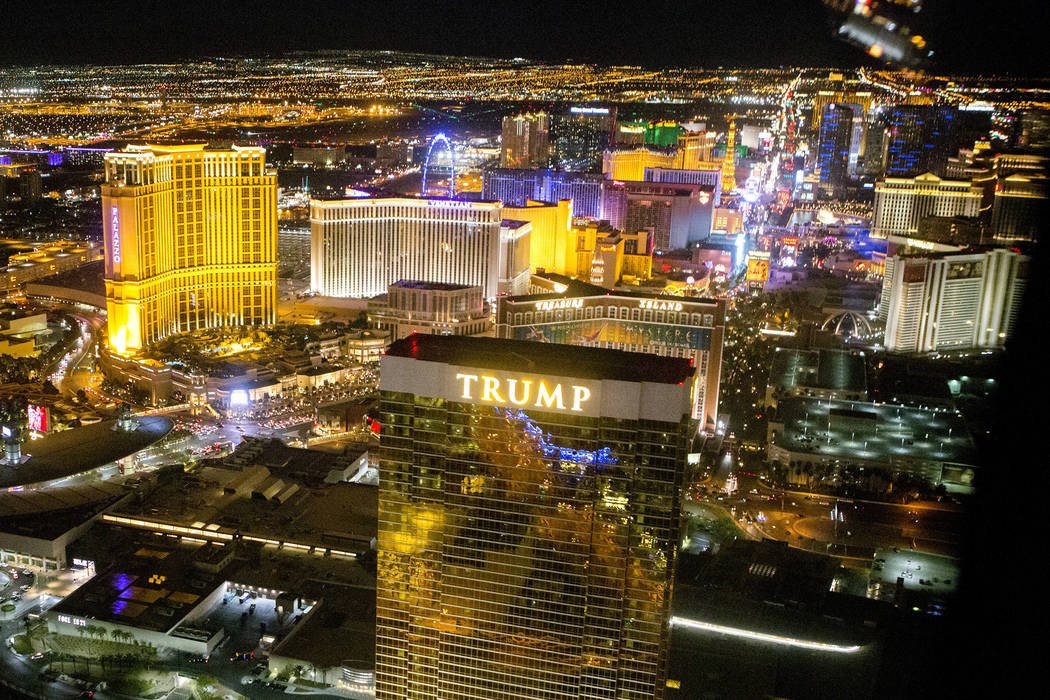In new book, architect explores the Las Vegas Strip’s multiple transformations
Love at first sight.
Many first-time Vegas visitors know the feeling. But after his first mesmerizing Vegas visit, Stefan Al decided to write a book about it.
Now, a dozen years after his initial encounter, Al’s “The Strip: Las Vegas and the Architecture of the American Dream” (due Friday from MIT Press) explores the history, and impact, of the quintessential street of dreams.
Al’s book recounts Las Vegas Boulevard’s transformation from Wild West outpost to “implosion capital of the world,” with mammoth new megaresorts replacing faded tourist magnets. But it also focuses on how “America has been Las Vegas-ized,” with “gambling in almost every state,” the author says in a telephone interview.
The Dutch-born, New York-based architect and urban designer first encountered Las Vegas during a Thanksgiving visit 12 years ago.
“I had just moved to California and I had no family in the U.S., so I decided to drive to Las Vegas from Berkeley,” he recalls. On the road, “I was completely surprised, after a couple of hours of desert and silence,” to find instant sensory overload on the Strip.
“The large buildings, the lights, the smells, the sounds — everything seemed designed to overstimulate you,” Al notes. “I had never seen anything like it.”
Not only was Al surprised by Las Vegas’ unabashed, in-your-face energy, “a lot of things, as a designer, were very interesting,” including evidence of “cutting-edge technology” on display everywhere from his hotel room to Bellagio’s famous fountains.
That was where “the fascination started,” acknowledges Al, who teaches urban design at the University of Pennsylvania.
“At the time, I thought this was a unique moment in time,” he explains. “But when I started to investigate the history” of Las Vegas, he discovered that “it wasn’t as new as I thought that it was.”
For decades, Strip developers “were on the forefront” of innovation, in part because they had “a lot of money to build — and a lot of tourists that needed to be attracted,” Al observes, noting the “shifting of priorities” on the Strip through the years.
In his book — which began as an academic dissertation before “I realized this would be appealing to a popular audience” — Al divides the Strip’s history into seven development phases.
He begins with the 1940s “Wild West” (exemplified by El Rancho Vegas and the Last Frontier) and “Sunbelt Modern” (1946-1958), marked by such Strip landmarks as the Flamingo, Sands, Sahara, Desert Inn, Dunes, Riviera and Tropicana.
Al cites the “Pop City” era (1958-69) as his favorite, thanks to (among others) the Stardust, Caesars Palace and Circus Circus.
“Las Vegas becomes its own eccentric self” then, he notes, leaving behind Western and midcentury styles “derivative of other places. During the ’60s, with neon signs as tall as 20-story buildings — that has never been seen anywhere else. It kick-started a whole new movement in architecture.”
With more than 40 million Las Vegas visitors annually, “everybody has an opinion about the buildings” of today’s Las Vegas, Al comments. And his book “will give them another type of tour of the Las Vegas Strip.”
Contact Carol Cling at ccling@reviewjournal.com or 702-383-0272. Follow @CarolSCling on Twitter.
Reflections on 'The Strip'
In his new book, architect and urban designer Stefan Al looks beyond the Strip's surface flash to explore multiple transformations from desert outpost to international mecca. A few of his observations:
• From the introduction: "Since its beginning, Vegas developers have surfed waves of social, cultural and economic change to build casinos so compelling that they actually drew vacationers to the Mojave Desert. From exploiting Disneyland to the atom bomb to the sexual revolution to 'green' building, the Strip mirrored America as a whole."
• On the Strip's early years: "It was as if developers built shrines to Liberace, the one-man diamond-mine, his Rolls-Royce covered in tiny mirrors, his sequined suit cape embroidered with jewels … "
• On the 1970s Strip: "Preceding Madonna's 'Material Girl' (1984) and Gordon Gekko in 'Wall Street' (1987), the 1970s Strip, from the Stardust reflector to the Aladdin's gilded canopy, glittered unfettered materialism night and day — thanks to the Mafia glitch in the corporate glitz."
• On themed megaresorts that took Strip visitors from Venice to Paris to New York: "Migrating heritage to Las Vegas led to juxtapositions so incredible that the Strip became the world's center of the original fake."
• On the current "starchitecture" trend: "In the new millennium, casino moguls moved from building replicas to authentic architecture. … To everyone's surprise, the Strip, once known for its $5 steaks and neon-lit grind joints, became a hub of high design and contemporary art."





























